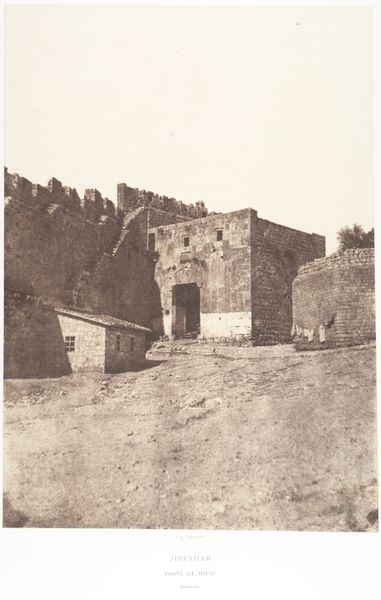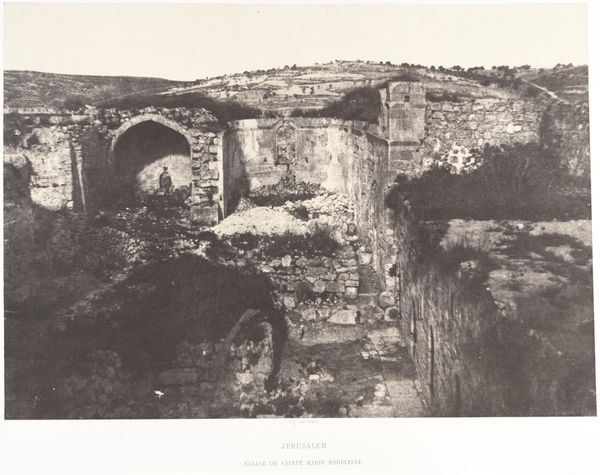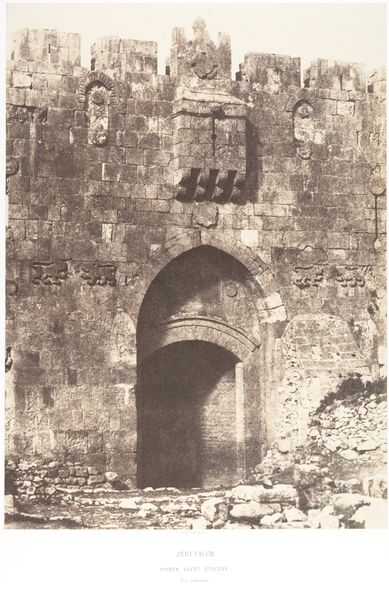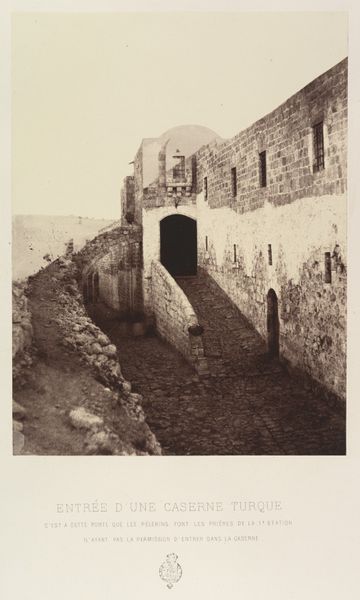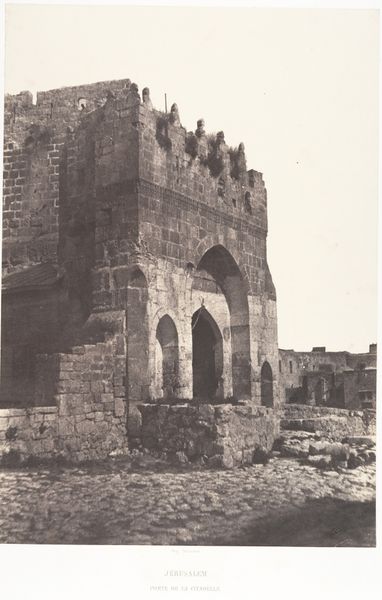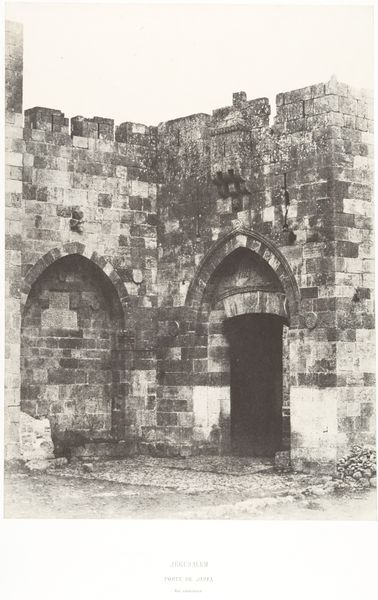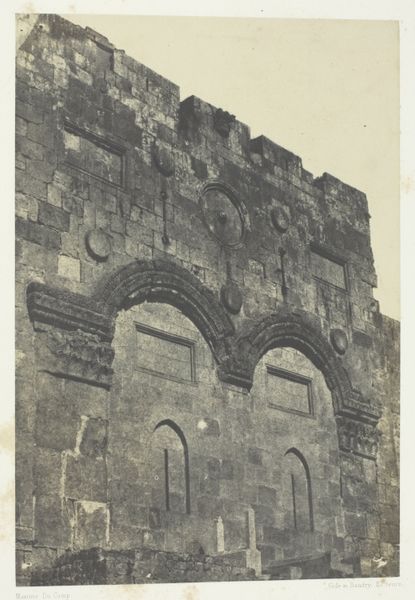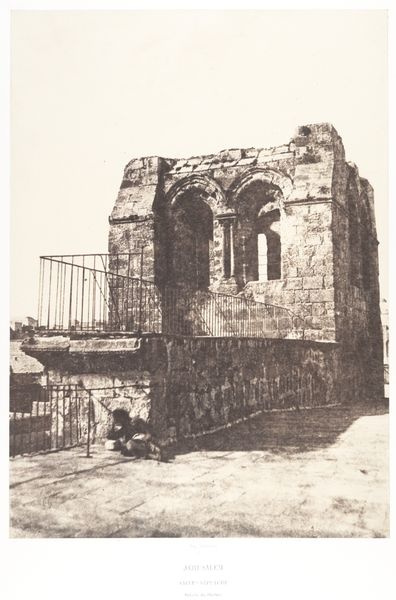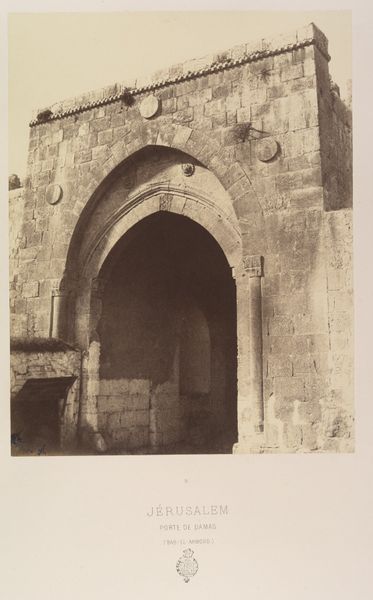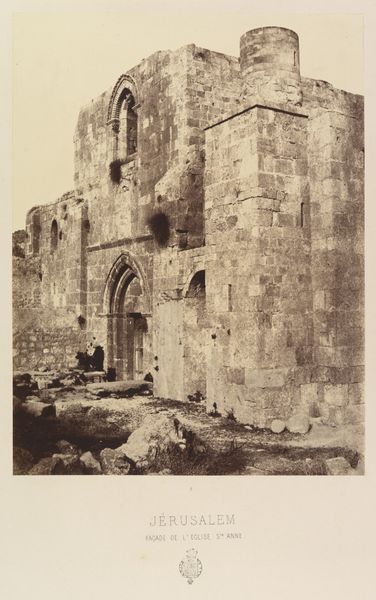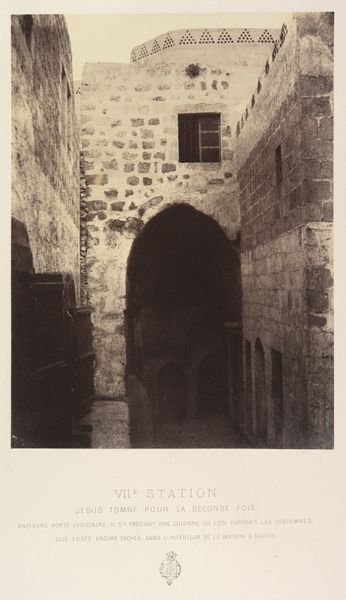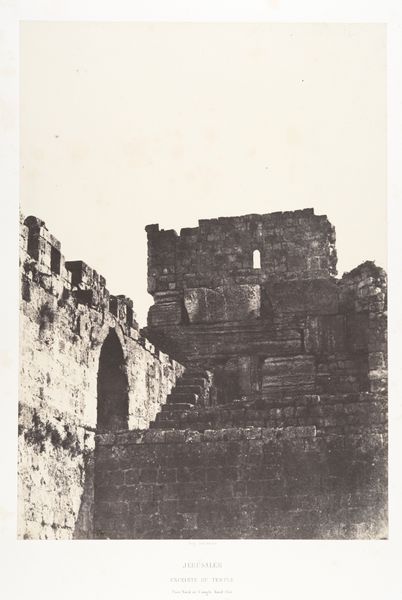
photography, albumen-print, architecture
#
landscape
#
photography
#
orientalism
#
cityscape
#
history-painting
#
albumen-print
#
architecture
Dimensions: Image: 33.2 x 23.5 cm (13 1/16 x 9 1/4 in.) Mount: 59.9 x 45.2 cm (23 9/16 x 17 13/16 in.)
Copyright: Public Domain
Editor: We're looking at Auguste Salzmann's "Jérusalem, Arc de l'Ecce-Homo," taken between 1854 and 1859. It's an albumen print showcasing an archway. The textures of the stone are so palpable. What exactly am I seeing in the context of its time? Curator: This image presents us with a unique intersection of orientalism, photography's burgeoning power, and religious historical narratives. Salzmann was commissioned to photograph the Holy Land with an explicit agenda: to "prove" biblical truths through the supposedly objective lens of the camera. How does that knowledge change your initial reaction to the scene? Editor: It feels manipulative to frame something objective when it clearly serves a religious and political purpose. Were these photographs used in specific ways? Curator: Absolutely. They were exhibited and disseminated, reinforcing European perspectives on the Middle East. Photography became a tool for colonial and religious validation. Consider the implications of showcasing a 'ruin' – does it highlight history or subtly imply decline requiring intervention? Editor: It feels like a projection of power, suggesting the need for European involvement in the region under the guise of preserving history. The ruin serves as evidence of that "need." Curator: Precisely. And think about the choice of the Ecce Homo arch – directly linking the site to the Passion of Christ, reinforcing religious connections, and thus a justification for their presence and perceived right to the land. Editor: It’s fascinating, and a bit unsettling, to see how seemingly straightforward photography could be so loaded with social and political messaging. I’ll definitely consider that next time. Curator: Indeed. It pushes us to consider how even the most ostensibly objective forms of representation are deeply intertwined with the power dynamics of their time. Always consider the context!
Comments
No comments
Be the first to comment and join the conversation on the ultimate creative platform.
